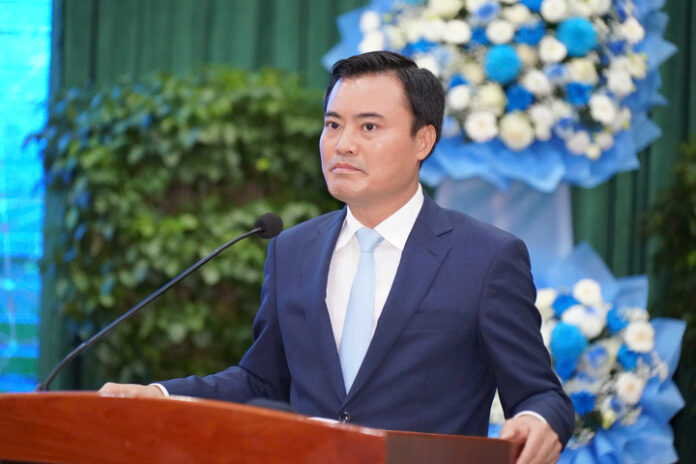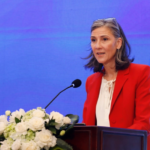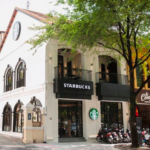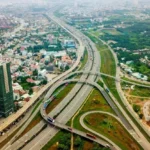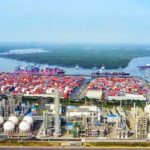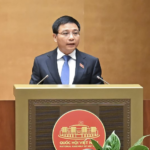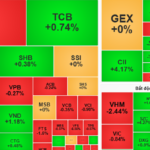On June 25th, Ho Chi Minh City People’s Committee organized a conference to announce the adjusted master plan for the city’s development until 2040, with a vision towards 2060. The new plan inherits the achievements of previous plans while addressing limitations and inadequacies in the city’s urban development over the past years.
Speaking at the conference, Vice Chairman of the Ho Chi Minh City People’s Committee, Bui Xuan Cuong, emphasized that immediately after the Prime Minister’s approval of the task to adjust the master plan, the city had implemented many synchronized tasks, ensuring the progress and quality of the plan.
The city also recognizes its central role in implementing national strategies, regional linkages, and socio-economic development.
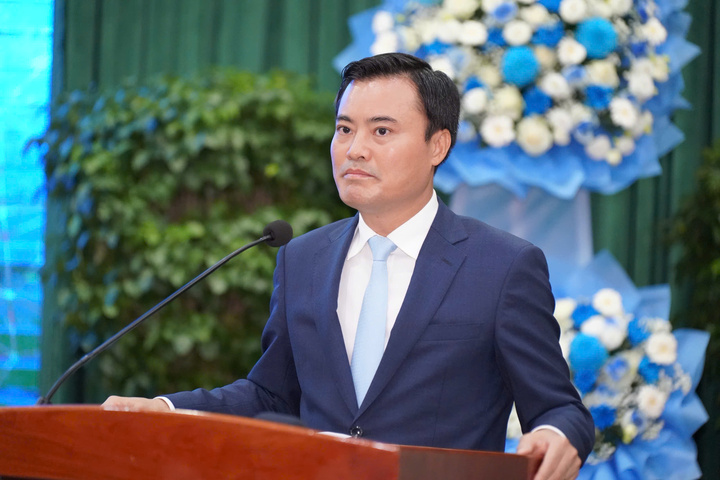
Vice Chairman of Ho Chi Minh City People’s Committee, Bui Xuan Cuong. (Photo: Hoang Hung)
Therefore, Ho Chi Minh City has proactively coordinated closely with neighboring localities such as Binh Duong, Dong Nai, Long An, Tay Ninh, Ba Ria – Vung Tau, and Tien Giang to unify the direction of spatial development, infrastructure connectivity, environmental protection, and efficient exploitation of regional potential.
“This is not only a legal requirement but also an important guideline for Ho Chi Minh City to concretize development goals in the new phase, maximizing advantages and utilizing specific mechanisms to create a sustainable driving force for the city and the key economic region of the South”, affirmed Mr. Bui Xuan Cuong.
Vice Chairman Bui Xuan Cuong also shared that this master plan will serve as a foundation for the formulation of detailed planning for the city’s divisions and specifics.
“We commit to ensuring there will be no gaps or waiting periods in the management of urban development”, Mr. Cuong added.
Especially, this master plan also serves as an important stepping stone towards establishing a master plan for a unified Ho Chi Minh City, as the city, along with the country, is preparing for the rearrangement of administrative apparatus and the operation of a new model – a unified Ho Chi Minh City merged with Binh Duong and Ba Ria- Vung Tau.
Goal: Ho Chi Minh City – A Global City
The plan envisions that by 2060, Ho Chi Minh City will become a global city – civilized, modern, and compassionate, with a development level on par with major cities worldwide. The city will be a financial and service hub of Asia and a crucial growth pole, driving the development of the Southern region and the entire country.
The city aims to offer a high standard of living and a distinctive culture, attracting leading financial institutions and international economic groups.
Ho Chi Minh City is planned with a multi-center urban model, featuring diverse ecological spaces and a development orientation along nine radial axes (including four East-West axes and five North-South axes) and economic spillover through three belts and coastal economic corridors.
The city is divided into six urban subdivisions, with key development centers: the Ho Chi Minh City core (Saigon – Cho Lon), Truong Tho – Rach Chiec, Phu My Hung (expanded), Tan Kien, and Northwest Hoc Mon – Southwest Cu Chi. These areas are highly feasible and convenient in connecting with the city center.
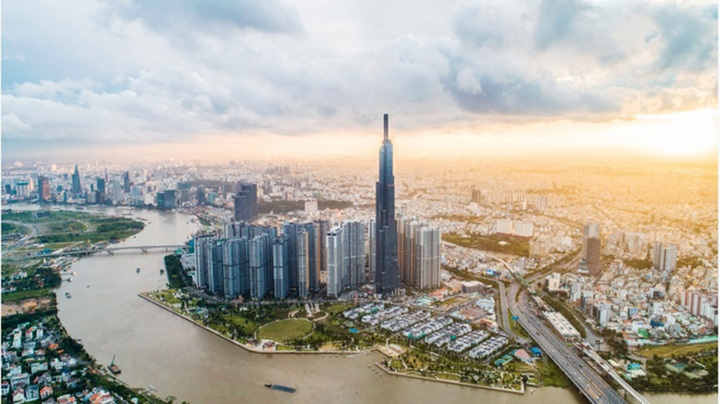
Ho Chi Minh City Panorama
Each subdivision is oriented towards multi-functional development, capable of meeting high-quality employment and living environment needs on-site, in conjunction with its role as a regional, national, and international center, while effectively connecting with urban infrastructure and TOD (Transit-Oriented Development) orientation.
According to the plan, Ho Chi Minh City has approximately 32,000 hectares of land with potential for TOD-oriented development. This includes 9,000 hectares of industrial and manufacturing land or land for functional conversion, and about 23,000 hectares of existing land that can be redeveloped in conjunction with renovation and functional conversion in populated areas.
Ho Chi Minh City also focuses on planning open and public spaces integrated with ecological landscapes and the natural environment. In the central urban area, about 30% of the land for redevelopment will be allocated for public parks and green spaces.
Public parks and walkways are organized along the river and canal systems, minimizing the construction of motorized roads that separate the riverfront parks from the urban space. In Can Gio, the mangrove forest will be sustainably exploited for eco-tourism, including hot air balloon rides over the forest, building walkways, and observation towers within the forest core area.
Ho Chi Minh City aims to develop modern business centers capable of generating high economic value, linked to regional transportation systems and international gateways. Each center will develop specialized value chains, attracting businesses in specific fields.
The city will also reorganize the urban space into approximately 60 “live and work catchment areas,” leveraging the potential and opportunities of each subdivision. Each catchment area has a radius of about 5km (larger in rural areas), integrating commercial, service, and employment centers, serving as regional, national, or international urban areas.
Transportation connections between urban centers and regions will be facilitated through a large-scale public transportation system, along with major road and waterway axes, creating a flexible and efficient operational network.
Ho Chi Minh City aims to transform the riverfront along the Saigon River into the “urban frontage,” expanding from the traditional riverfront center to form a two-sided urban strip, thus creating the city’s “expanded heart.” This area will hold the highest value in terms of history, landscape, and cultural identity, becoming an attractive destination for locals and international visitors alike.
On June 11, 2025, the Prime Minister signed Decision No. 1125/QD-TTg approving the adjusted master plan for Ho Chi Minh City’s development until 2040, with a vision towards 2060.
“Innovating for an End to Plastic Pollution.”
The finalists of the 2025 Innovation Challenge on Plastics showcased a diverse range of approaches to tackling plastic pollution. From bio-substitute materials and circular economic models to waste management technologies and smart waste management platforms, these initiatives offered a holistic view of addressing the plastic waste crisis. Additionally, the presence of policy-driven initiatives promoting green consumer behavior added a unique dimension to the cohort, underlining the importance of a multi-faceted strategy in combating this global issue.
The Art of Constructing Your Dream Home: Navigating TPHCM’s Pilot Exemption for Residential Building Permits
By the end of this year, Thu Duc City will have several areas approved for detailed planning at a 1/500 scale and will pilot exempting permits for individual housing construction. If this pilot proves successful, the official exemption of permits for individual housing construction will be implemented from January 1, 2026, onwards.
“Global Fund Pando 1 Acquires Over 37.5 Million APG Shares, Surpassing a 22% Stake”
Pando 1 Investment PTE. LTD., a prominent investment firm based in Singapore, has recently announced a significant acquisition of shares in APG. Between May 20 and June 18, the firm purchased an impressive 37.51 million shares, boosting their ownership from 11.74 million shares (representing a 5.25% stake) to a substantial 49.25 million shares, which equates to a notable 22.02% holding.

























